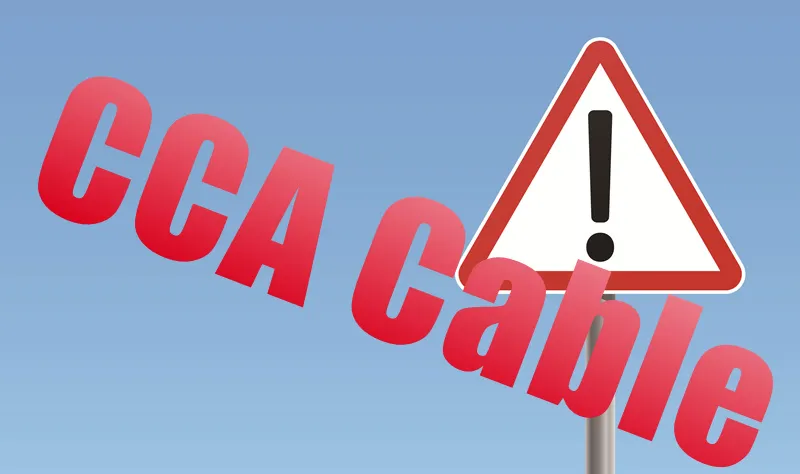If the budget for network infrastructure is limited, it can be tempting to try low-cost cable. CCA(copper clad aluminum) cables may be perfect for cost savings.
While CCA wires appear to function in the same way as standard Category 5e or Category 6 cables. But there are significant differences that could cause network issues. It can also cause business continuity concerns, and safety concerns.
Let’s learn why CCA cables cause network problems.
Limited running distance:
Signal strength is low on longer CCA cable that runs near the 100-meter maximum when compared to solid copper Category 5e.
As a result of having to retransmit more packets of data, this can result in data loss.
Slow Data Transfer:
The resistivity of steel and aluminum is substantially higher than that of copper.
The usage of category 5 and 6 patch cables can result in huge quantities of data loss and, over time, reduce transmission speeds.
Bending Intolerance:
CCA cable is hard and bend-resistant.
Due to its reduced tensile strength and malleability, simply pulling it off the reel or out of the box may break the conductor.
There is a substantial danger of the conductors breaking during installation, even if they did not break during removal from the packing.
Environmental Hazards:
The aluminum used in the CCA cables is a highly reactive metal that oxidizes when exposed to oxygen.
This may result in network infrastructure termination failures, resulting in connectivity issues. Locating and fixing these issues can take a long time.
Non-Flexible:
CCA conductors are inelastic and quickly break; failures have been reported even when a patch panel or faceplate is moved.
CCA wires can also break off as a result of pulling or shearing. This can happen in packaging or during delivery, due to their low tensile strength.
It’s also worth noting that CCA cabling has a finite bend radius.
Attenuation:
CCA cable is not as capable of delivering Ethernet data signals over long distances.
Attenuation is a fancy word for deterioration in quality, which in this case refers to the signal’s quality.
Temperature:
Due to the wires themselves heating up and potentially causing a fire, the CCA cable is not appropriate for Power Over Ethernet (POE).
If the resistance within the wire is not in balance, it can drop the voltage. The voltage drop can cause damage to your POE device.
Owing to all these network problems, you should properly consider the specs of your cable.
Final Words
Purchase from respectable and well-known sources. If a reseller or manufacturer sells CCA cable, stay away from them.
If a reseller or manufacturer is ready to sell you cabling that is clearly unsuitable for any use. You should be skeptical of any promises they make about their products.
Because aluminum weighs less than copper, the CCA cable is lighter.
When you compare shipping weights for suspected cables to known high-quality pure copper cable. The CCA cable will be lighter, which should raise suspicion.
If you observe that the conductors are especially fragile and break when removing kinks during installation. You should pause and assess the situation.
CCA cables if not chosen for appropriate locations, might distort the working. Yet, you should have prior knowledge about them before you buy them.

